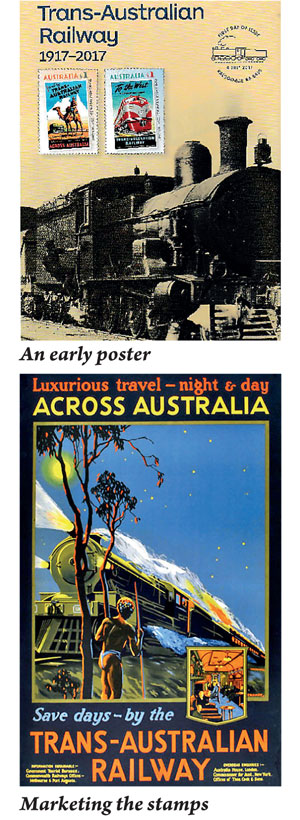Thursday Jan 01, 2026
Thursday Jan 01, 2026
Saturday, 15 July 2017 00:00 - - {{hitsCtrl.values.hits}}
A railway line covering a distance of nearly 1,700 kilometres (1,693 to be exact) through Australia’s driest and most isolated terrain induced Western Australia (WA) to join the Commonwealth of Australia at the turn of the  20th century. WA capital, Perth, was then cut away from the rest of the country with the only method of transport being by sea. The journey was not only time-consuming but inconvenient and uncomfortable due to rough seas.
20th century. WA capital, Perth, was then cut away from the rest of the country with the only method of transport being by sea. The journey was not only time-consuming but inconvenient and uncomfortable due to rough seas.
It was argued that a transcontinental rail link would facilitate closer communication with eastern states and the newly-formed commonwealth would acquire a sense of national unity. Once the offer was accepted, work on the railway line between Port Augusta in South Australia and Kalgoorlie in Western Australia began in 1912.
It took five years for teams of rail workers to lay the 2.5 million hardwood sleepers and 140,000 tonnes of rail needed to finish the 1693-kilometre job. The work was completed on 17 October 1917. Five days later the first passenger train set off from Port Augusta, arriving at Kalgoorlie 42 hours and 48 minutes later. 
The centenary of the Trans-Australian Railway will be celebrated in October this year. The start was made early this month with the release of two stamps featuring posters issued between 1930 and 1960 advertising the new railway line to create awareness and get people to patronise it. One depicts a camel viewing a locomotive as it speeds across the desert towards Perth. The other shows the first diesel locomotive. There were others posters promoting ‘Luxurious travel – night and day across Australia’.
In constructing the railway line the tracks were built simultaneously in both directions, east from Port Augusta and west from Kalgoorlie. The outbreak of war in 1914 had made it difficult to source labour and materials, but by 1916 more than 3,400 workers had been employed on the project. Maintenance crews lived along the line at intervals, and the weekly ‘Tea and Sugar train’ supplied the basic requirements of railway workers. They could buy stamps and money orders and was also provided with banking facilities. A middle section of one carriage formed the train’s post office which had been operated until 1986. Once the project was completed it radically shortened travel and communication time. Mail delivery from Adelaide to Perth was cut by two days, and eastbound travellers who took the train arrived in Melbourne three days earlier than those making the journey by ship.
It was reported that many people, including federal politicians, theatrical performers and members of the royal family travelled on the line. They enjoyed the first hot showers ever installed in a rail carriage, ate meals in the dining cars, sang along to the piano or had a quiet drink in the lounge car before resting in comfort in first-class sleeping cars.
The railway was not only for the wealthy. It also provided Australians with greater opportunities for recreational travel and helped Western Australia become a tourist destination.
In 1969, the rail network was extended east from Port Augusta as far as Sydney, and west of Kalgoorlie all the way to Perth, making it possible to catch a train from the Pacific Ocean across the continent to the Indian Ocean. This has led to the naming of the Indian-Pacific, the passenger train that now runs along the line.